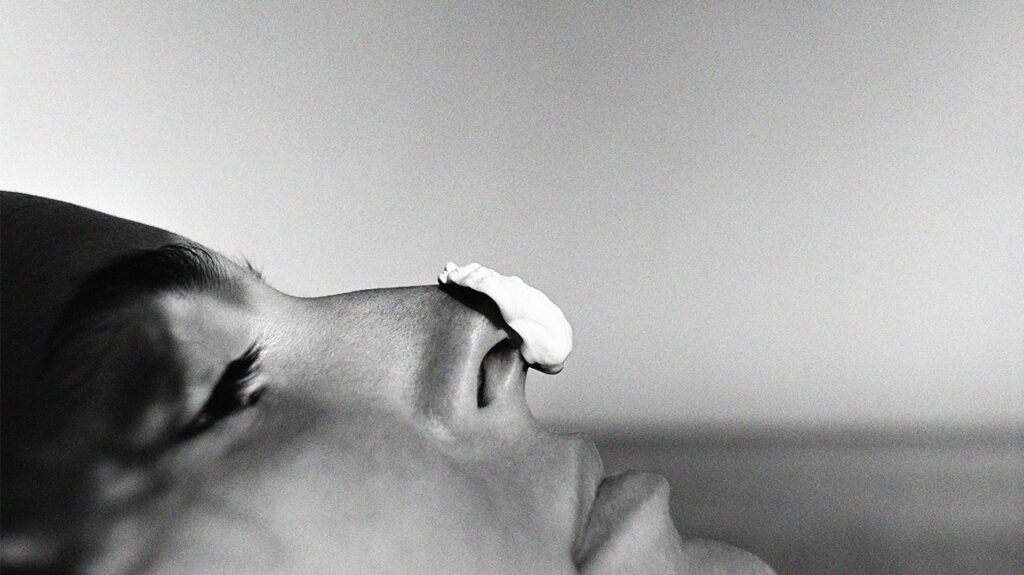There are numerous possible causes of a discolored nose. A person may experience nose discoloration due to rosacea, dry skin, lupus, and allergies.
Nose discoloration can be due to skin and blood vessel issues, chronic inflammation, allergies, and other conditions.
On some skin tones, these conditions may not cause redness. For example, on dark skin tones, rosacea may cause dark brown skin discoloration instead of redness. Other rashes may appear gray, white, or purple in people with dark skin tones instead of red. Learn more about rashes on dark skin here.
A person’s nose can turn red and other hues because of changes in the skin surface or blood vessels, such as inflammation and broken blood vessels.
The most common causes of nose discoloration include:

Rosacea is a skin condition that causes skin discoloration and irritation. In some people, rosacea begins as a tendency to blush easily.
On light skin tones, this discoloration often appears red or pink. On darker skin tones, rosacea flushing may be dusky-brown-hued or appear different than the surrounding skin.
The discoloration typically begins on the cheeks and spreads to the nose, ears, chin, and other areas of the face or body.
Rosacea is not well understood.
Four types of rosacea can cause skin discoloration:
- erythematotelangiectatic rosacea
- ocular rosacea
- phymatous rosacea
- papulopustular rosacea
Learn more about the types of rosacea here.
Treatment
Treating rosacea begins by identifying lifestyle factors that contribute to outbreaks of the condition. Some people develop rosacea in response to stress, certain foods, or skin creams. Eliminating these triggers can reduce the severity and frequency of discoloration.
Sunscreen can prevent rosacea from worsening but will not treat the underlying cause.
Drugs containing sulfur and some antibiotics can control symptoms of rosacea. When rosacea makes blood vessels more visible, some cardiovascular medications can help.
Rhinophyma is a
People with rhinophyma may develop visible blood vessels that are either thin and red or thick and purple.
Treatment
Rhinophyma cannot be reversed with traditional treatments, but treating the underlying rosacea can prevent it from worsening. Cosmetic surgeries may help.
Surgical treatment options include:
- cryotherapy, which freezes and removes affected skin.
- dermabrasion, which scrapes the skin’s surface to even its appearance.
- dermaplaning, which removes affected skin.
- laser resurfacing, which uses a laser to reshape the skin.
Very dry skin can make the nose look discolored and irritated. Some people develop this dryness and irritation from frequently wiping their nose.
Dry skin conditions like eczema can make the nose look discolored, scaly, or irritated. This discoloration may appear dark brown, purple, or gray on darker skin tones or red and pink on light skin tones.
The discoloration is normally temporary, but the underlying condition may cause frequent flare-ups.
Learn more about the symptoms of eczema on skin of color here.
Treatment
Dry skin requires additional moisture, so a thick moisturizing cream may help. People with eczema may need to experiment with various remedies, as some people find that foods, allergens, or stress can trigger eczema flare-ups.
Other treatments that may work include:
- steroid creams
- oatmeal products to soothe the skin
- phototherapy, using light to treat eczema
- special eczema moisturizers
- medications to treat the eczema cause
Lupus is an autoimmune disease that causes the body to attack healthy cells. Many people with lupus develop a butterfly-shaped rash on their noses and cheeks. This rash, called a malar rash, can make the nose look discolored and bumpy.
Lupus medications may help reduce the frequency and severity of lupus-related skin problems, including nose discoloration.
Treatment
Treating the symptoms of lupus can prevent lupus from attacking the skin. Some treatments that may reduce the effects lupus has on the skin include:
- lifestyle changes, such as managing stress and avoiding sun
- creams applied directly to the skin, including steroids, retinoids, antibiotics, and some others
- systemic medications to control the symptoms
Allergies can affect the nose in several ways. Hay fever, dust, and pet allergies may cause sneezing and a runny nose.
Frequent nose-wiping can irritate the skin, creating a discolored appearance. Allergies may also cause blood vessels in and around the nose to swell or burst under the skin, making the nose look swollen.
Allergies to skin care and cosmetic products may irritate the skin’s surface, leaving it dry, discolored, flaky, or itchy.
Treatment
Avoiding cosmetics and skin products that cause allergic reactions can prevent nose discoloration. People with seasonal or respiratory allergies may benefit from products available for purchase over the counter or online, such as allergy medications or saline nasal spray.
Gently blotting the nose with a soft cloth can help prevent irritation. Moisturizing creams can also help, especially if the skin looks scaly and dry.
Injuries to the nose can rupture blood vessels under the skin, making the nose look swollen and discolored. Recent surgery to the nose, being hit on the nose, cystic acne, and skin injuries can all cause skin changes.
Treatment
In cases of skin barrier trauma, skin discoloration will typically wane with time. Hot and cold compresses and anti-inflammatory medication may help reduce visible discoloration.
Some other factors can cause temporary discoloration. The change is short-lived, and the nose returns to its normal color within a few minutes or hours.
Alcohol, temperature changes, eating spicy food, and blushing cause temporary discoloration. People with thin or pale skin and visible blood vessels are more likely to notice this discoloration in response to these factors.
Treatment
Avoiding triggers for nose discoloration, such as alcohol and spicy foods, can also help.
If a person has allergies or a frequently runny nose, they can use soft tissues and moisturize their skin often to avoid dryness and irritation.
There are many causes of skin discoloration on the nose and across the body. The exact presentation of symptoms, as well as their treatment, will depend on the individual cause.
